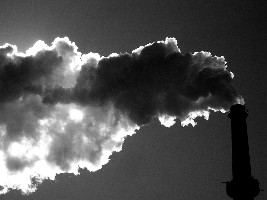 A research team at Lehigh University in Bethlehem, Pennsylvania has developed catalysts that convert the harmful nitrogen oxides emitted from coal- and gas-fired power plants to nitrogen and water vapor. Unlike current methods, the catalysts developed with nanotechnology do not use ammonia or need high temperatures to work.
A research team at Lehigh University in Bethlehem, Pennsylvania has developed catalysts that convert the harmful nitrogen oxides emitted from coal- and gas-fired power plants to nitrogen and water vapor. Unlike current methods, the catalysts developed with nanotechnology do not use ammonia or need high temperatures to work.
Charles Lyman, professor of materials science and engineering, and Rick Herman, a senior research scientist at Lehigh, sought first to improve the performance of a platinum-rhodium nanoparticle-based catalyst that uses hydrogen, rather than ammonia, as a reducing agent. This catalyst works at much lower temperatures.
In their initial research, they developed nanoparticles with an average diameter of 2 nanometers (2 billionths of a meter), first with 10 percent rhodium, and then 5 percent rhodium, that successfully adhered to the nitrogen oxide molecules, without the high temperatures or ammonia required in current procedures.
But rhodium is expensive, with prices prone to sharp swings and speculation, and currently costing about $2,250 a troy ounce. Lyman and Herman continued their work and have developed catalysts using much less expensive cobalt and nickel that also work in concentrations as low as 2 percent.
Photo: Codo/Flickr

 RSS - Posts
RSS - Posts
You must be logged in to post a comment.